|
| |
|
|
|
| |
Some of the local attractions: |
|
|
| |
|
|
|
| |
The Cathedral of the Assumption of the Blessed Virgin Mary
A favourite meeting spot and the starting point for any tour of Varna, the cathedral is the city's main landmark. It was built at the end of the 19th Century, of cut stones from the ruined fortress walls. Because insufficient funds for its construction were gathered from donations, the municipality held a lottery, thus raising a further 300,000 leva from its citizens. The iconostasis was made by Ivan Filipov, a master craftsman from Debur, and most of the icons were presented as a gift from the Russian Tzar Nicholas II, in 1901. The day of the Virgin Mary's assumption into heaven, 15 August, is still the official holiday of the city of Varna. |
 |
|
| |
|
|
|
| |
|
|
|
| |
|
|
|
| |
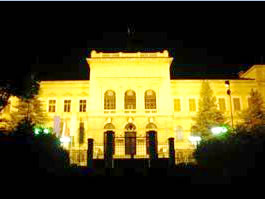 |
Varna Archaeological Museum
The Archaeological Museum is found in the northern part of Varna city centre. The museum is a of considerable size - the building previously being used for Varna Girls School. Bulgaria has a very rich and colourful history and this is reflected in the contents of the museum. The museum boasts large and varied collections including Chalcolithic gold artefacts over 6000 years old; clay artefacts from Arsenala (a settlement now submerged under Varna Lake); jewellery from Thracian, Roman and Hellenistic periods; and a large collection of religious icons. Arguably the most impressive exhibit is the Gold of Varna, the oldest gold treasure in the world, excavated in 1972 and dating to 4600-4200 BCE, which occupies three separate exhibition halls. |
|
| |
|
|
|
| |
|
|
|
| |
|
|
|
| |
The Naval Museum
The Naval Museum of Varna is located in the east part of the Sea Garden just 5 min from the Aquarium. The museum has both indoor and outdoor exhibitions of over 100,000 exhibits. It is devoted to the history of the Bulgarian Navy. Models of Bulgarian battle ships, original torpedoes and a collection of lighthouse optics are displayed on two floors. A special showroom is dedicated to the Bulgarian Navy participation and glorious victory in the Balkan War during 1912-1913. The most valuable exhibit is the destroyer Druzki placed there in 1957, known for torpedoing the Turkish cruiser Hamidie on November 12,1912 during the Balkan war. This is the only ship of its type to be preserved until today.
|
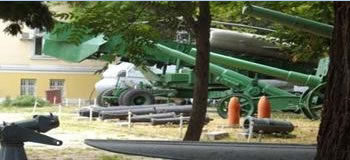 |
|
| |
|
|
|
| |
|
|
|
| |
|
|
|
| |
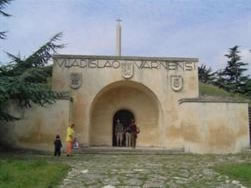 |
Park-Museum Wladislaw Warnenchik
The park-museum Wladislaw Warnenchik is a memorial complex on an area of 30 decares. It is located in the western part of Varna at the place of the battlefield from 10.11.1444, where a mixed Christian army, comprising of Hungarians, Polish, Czechs, papal knights, Bosnians, Croatians, Bulgarians, Romanians and Routeni (Old Russians) fought a heavy battle near Varna against the Turks. More than half of the soldiers from the united army, together with the king of Hungary and Poland Vladislaw III Yagelo (Varnenchik) perished. In the museum can be seen arms and equipment from XV century, found on the battlefield (helmets, cross-bows, swords, shields, spears, etc.), paintings, sculptures, prints and other works of art, dedicated to the battle of Varna, flags, models, tickets and coats of arms. Moreover, on the territory of the park-museum there are two Thracian mounds where a Thracian tomb from IV c. BC is situated. |
|
| |
|
|
|
| |
|
|
|
| |
|
|
|
| |
Roman Thermal Baths
This is the greatest preserved edifice from Antiquity on the territory of Bulgaria and the third biggest Roman ruins in Europe from 2nd century AD. Only a small complex comparing to the original is still preserved. The church St. Atanasii is close to it. |
 |
|
| |
|
|
|
| |
|
|
|
| |
|
|
|
| |
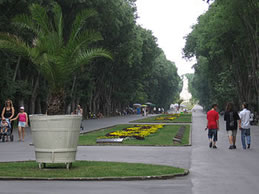 |
The Sea Garden
The Sea Garden of Varna is one of its landmarks. The first recreation centre was opened here in 1862, but the true decorative arrangement of the park started in 1895. Nowadays, it contains an open-air theatre (venue of the International Ballet Competition, opera performances and concerts), Varna Aquarium (opened in 1932), the Festa Dolphinarium (opened in 1984), the Nicolaus Copernicus Observatory and Planetarium, the Museum of Natural History, a zoo, a children s amusement park with a pond and other attractions. The National Revival Alley is decorated with bronze monuments to prominent Bulgarians, and the Cosmonauts Alley contains trees planted by Yuri Gagarin and other Soviet and Bulgarian cosmonauts. In January and February, migrating swans winter on the sheltered beaches. |
|
| |
|
|
|
| |
|
|
|
| |
|
|
|
| |
The Dolphinarium
It is the only dolphinarium on the Balkan Peninsula and it is one of the greatest attractions that Varna can offer to its guests. The show lasts 40 minutes. The visitors will enjoy the incredible intelligence and playfulness of the sea mammals. A curious fact is that in 1992 a baby-dolphin was born in the Dolphinarium in Varna. That event was a sign that the animals feel at home in their new surrounding.
|
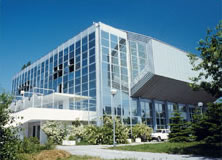 |
|
| |
|
|
|
| |
|
|
|
| |
|
|
|
| |
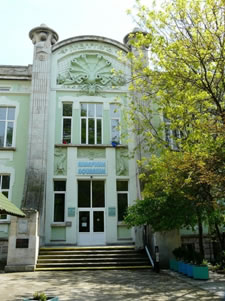 |
The Aquarium and the Black Sea Museum
Built in 1906-1912 and opened to the public in 1932, this aquarium features flora and fauna of the Black Sea.
Hundreds of marine and fresh water species are gathered here: fishes, molluscs, actinides, crabs, periwinkles, etc. |
|
| |
|
|
|
| |
|
|
|
| |
|
|
|
| |
Aladzha monastery
Aladzha monastery is about 4km long, and lies in the magnificent natural scenery on the Franga plateau slopes. "Aladzha" means "multi-coloured" in Turkish, a term usually used to describe brightly coloured silk textiles.
The really rich history of the monastery is due mainly to the Hesychast monks in the 13th - 14th centuries - followers of a doctrine in Orthodox Christianity. In that period many monasteries outside populated areas, appeared in inaccessible forests and on rocks. The two churches and the monks cells are dug high in the rock, forming two storeys connected via wooden stairs. The church is 11m long, 7 m wide and 2 m high and was richly painted. At about 800m from this place is situated a similar monastery or the so-called Katakombi. This place, managed as a museum reserve, is one of the intransient spiritual treasures of Bulgaria, evidence of rich culture and a centuries-old Christian way of life. |
 |
|
| |
|
|
|
|
